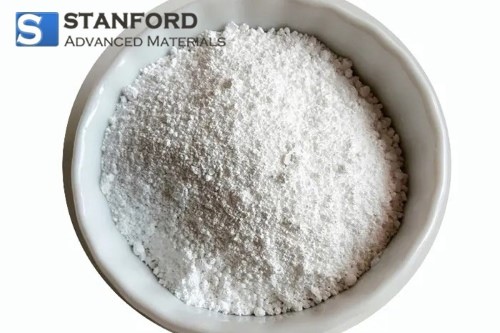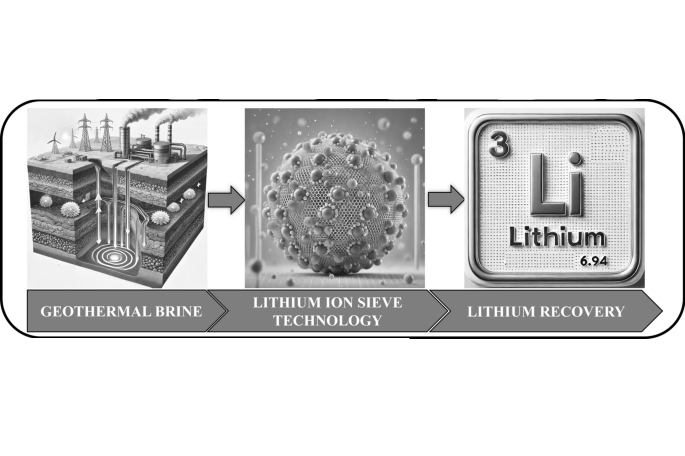Case Study: Ytterbium Oxide (Yb2O3) In The Oil And Gas Industry
Introduction
The oil and gas industry operates in environments with high temperatures, pressure variations and corrosive substances. These conditions reduce equipment lifespan and increase maintenance costs. Ytterbium Oxide (Yb2O3) has been identified for use in this sector.

Figure 1. Oil pumps [1]
Understanding Ytterbium Oxide (Yb2O3)
Ytterbium Oxide (Yb2O3) is a compound of rare earth elements. It demonstrates thermal stability, corrosion resistance and catalytic activity. These properties allow its use in high-temperature and corrosive environments in the oil and gas sector.

Figure 2. Ytterbium Oxide (Yb2O3)
Applications of Ytterbium Oxide (Yb2O3) in the Oil and Gas Industry
Ytterbium Oxide is used in the oil and gas sector.
Catalysts: Yb2O3 can be applied as a catalyst in reactions such as alkylation or cracking. Refineries use these reactions to convert crude oil fractions into products including petrol or diesel. This process increases yield and improves product quality.
Ceramic Coatings: Ytterbium Oxide-based coatings are applied to equipment surfaces that encounter high temperatures and corrosive substances. These coatings extend equipment lifetime and reduce wear.
Radiation Shielding: The oxide is utilised as a radiation shielding material in certain applications, especially those involving radioactive sources. Its high atomic number and density attenuate radiation effectively, thereby enhancing worker safety.
Advantages of Ytterbium Oxide (Yb2O3) in the Oil and Gas Industry
By utilising the properties of Ytterbium Oxide, companies can achieve several benefits:
Extended Equipment Lifetime: The corrosion resistance and thermal stability of Yb2O3 result in a longer operational lifespan for equipment. This advantage reduces replacement and maintenance costs.
Operational Efficiency: Improved material performance leads to optimised operations. Increased production rates and reduced downtime may follow.
Environmental Impact: Its catalytic properties contribute to cleaner refining processes by promoting efficient reactions. This outcome reduces harmful emissions.
Conclusion
Ytterbium Oxide (Yb2O3) is used in the oil and gas industry as a catalyst, coating material and radiation shield. It contributes to increased equipment lifetime, improved operational efficiency and enhanced safety in oil and gas operations. Given that the industry requires proven approaches, its applications are anticipated to become more significant in optimising processes.
Stanford Advanced Materials (SAM) has extensive experience in manufacturing Ytterbium Oxide. The website lists further products such as Ytterbium Metal, Ytterbium Chloride, Ytterbium Carbonate, Ytterbium Fluoride, Ytterbium Nitrate and others. For more information, please visit our homepage.
Reference:
[1] Markus, B. (30/11/2020). Colorado Oil and Gas Drilling Falls To Historic Lows As The Pandemic Crashes Demand. CPR News. Retrieved on 09/08/2023, from https://www.cpr.org/2020/11/30/colorado-oil-and-gas-drilling-falls-to-historic-lows-as-the-pandemic-crashes-demand/.

 Bars
Bars
 Beads & Spheres
Beads & Spheres
 Bolts & Nuts
Bolts & Nuts
 Crucibles
Crucibles
 Discs
Discs
 Fibers & Fabrics
Fibers & Fabrics
 Films
Films
 Flake
Flake
 Foams
Foams
 Foil
Foil
 Granules
Granules
 Honeycombs
Honeycombs
 Ink
Ink
 Laminate
Laminate
 Lumps
Lumps
 Meshes
Meshes
 Metallised Film
Metallised Film
 Plate
Plate
 Powders
Powders
 Rod
Rod
 Sheets
Sheets
 Single Crystals
Single Crystals
 Sputtering Target
Sputtering Target
 Tubes
Tubes
 Washer
Washer
 Wires
Wires
 Converters & Calculators
Converters & Calculators
 Chin Trento
Chin Trento



